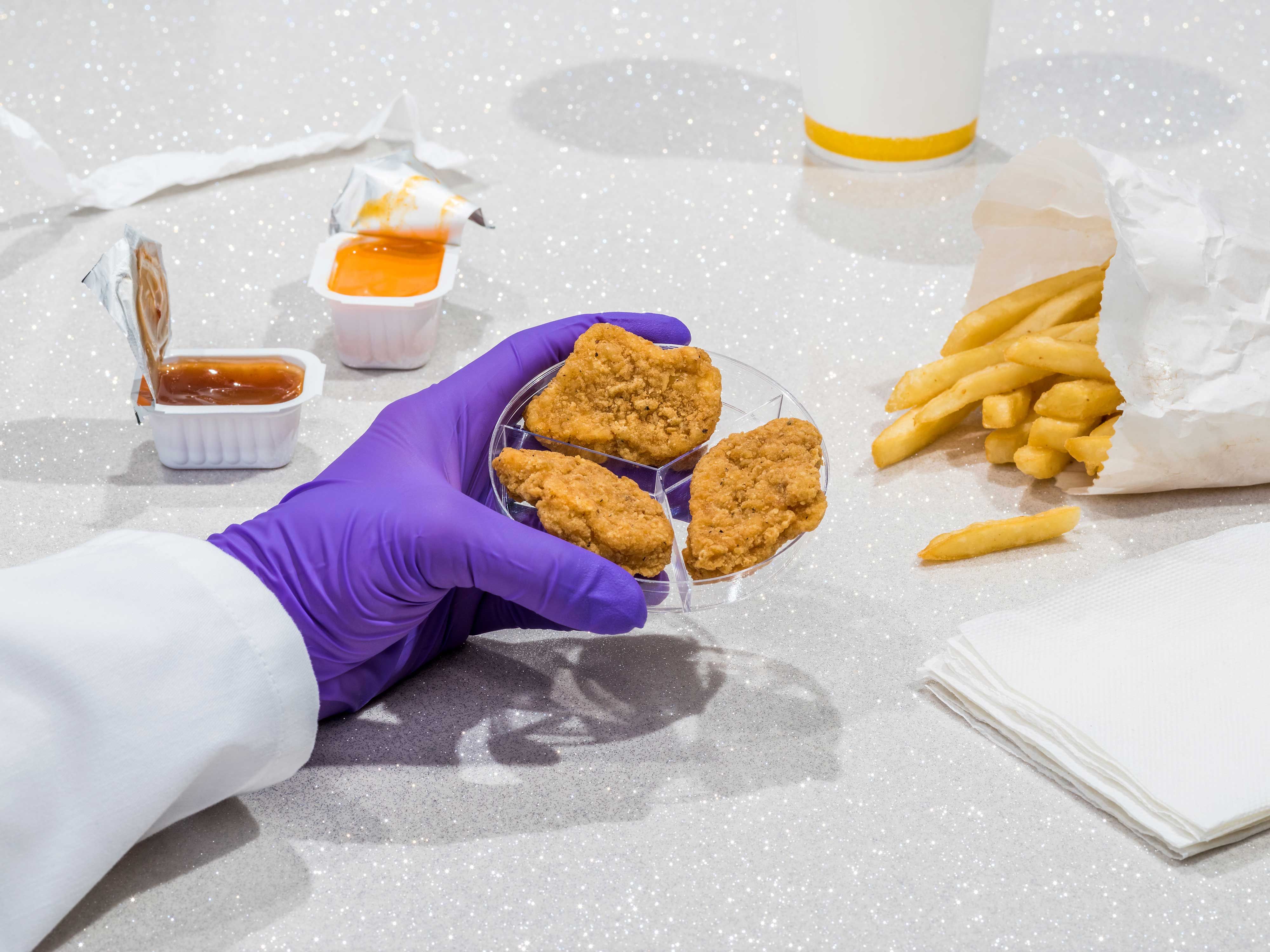By Nicola Jones
Companies making cultured meat are attracting billions of dollars of investment. Here are their biggest challenges.
“It tastes like chicken.” That’s a common review of UPSIDE Foods’ new trial product. Perhaps that’s not surprising: it is, after all, chicken — at the cellular level. But the fillets are not from a slaughterhouse. They are grown in bioreactors in an urban factory in California.
A little over a decade ago, only a handful of researchers were investigating the potential of laboratory-made meat. The world’s first cultured beef burger, which reportedly cost US$325,000, was made by Maastricht University biomedical engineer Mark Post, who ate it at a press conference in 2013. Such products are now much closer to market: more than 150 companies around the world are working on cultured meat (from ground beef to steaks, chicken, pork and fish), milk or related ‘cellular agriculture’ products, including leather.

This June, US regulators passed lab-grown meat, making the country only the second in the world to move this food to market. Two companies, UPSIDE Foods in Berkeley and GOOD Meat (owned by Eat Just in Alameda, California), now have the green light to sell their cultivated chicken (since 2020, small quantities of GOOD Meat’s chicken have been available for purchase only in Singapore). Observers expect at least one product to be available at a US restaurant this year, even if initially sold at a loss. Production plants are being built, and investment has hit $2.78 billion, according to an industry report.
As commercial activity ramps up, academics in diverse areas, including food science and medical biotechnology, are improving cell culture and refining other parts of the process. The Good Food Institute (GFI), a non-profit organization based in Washington DC that was founded in 2016 to promote alternatives to animal products, has handed out $17 million through more than 100 research grants to beef up the science on all aspects of meat alternatives; just over half the money went to cultivated meat.
In 2021, Tufts University in Medford, Massachusetts, set up a Center for Cellular Agriculture, where around two dozen researchers now work on aspects from making to marketing cell-cultivated meat. And this April, the United Kingdom funded a Cellular Agriculture Manufacturing Hub led by the University of Bath.
Advocates say that cultured meat will slim the negative impacts of humanity’s voracious appetite for flesh. Rearing livestock uses vast amounts of land and accounts for about 15% of global greenhouse-gas emissions. Consumption of red and processed meat has been linked to heart disease, diabetes and cancer; chicken farms can spread viruses such as avian influenza and promote antibiotic resistance; fish farms can pollute ocean waters. Globally, 80 billion animals die for our dinners each year — and a joint report by the United Nations and the Organisation for Economic Co-operation and Development predicts that global demand for meat will rise by 15% by 2031, thanks to a growing affluent population.

In response, the food industry is developing a bevy of alternative protein sources, from algae to insects (see ‘Fungi bacon and insect burgers: a guide to the proteins of the future’). But if the sensual experience of meat is a priority, then cell-cultivated meat might take top prize. “I’ve spoken to people who have been vegan for 15 years and they still crave meat,” says Post. If meat-loving habits prove too hard to shift, he says, the obvious solution is to replace meat with meat.
Industry observers disagree, however, about how much cultured meat can be produced, how cheaply and whether the effort is worth it.
“There’s such obvious benefits in terms of land use and biodiversity-related impacts. It’s just a more efficient way to produce meat,” says Pelle Sinke, an industrial ecologist at the non-profit consultancy CE Delft in the Netherlands, who has worked on reviews of the carbon footprint and cost of cultured meat. But, he adds, there are still big questions about energy use, technology development and the market. Current versions are hundreds to tens of thousands of times more expensive than conventional meat1. And to replace, say, 10% of the roughly 300 million tonnes of standard meat eaten globally each year could require construction of hundreds of thousands of bioreactors.
“I’m very critical of cultured meat,” says Marco Springmann, a food-systems researcher at the London School of Hygiene & Tropical Medicine, who contributed to a 2019 World Economic Forum white paper on alternative proteins and the 2019 EAT Lancet Commission report on healthy, sustainable diets. “I think it’s a bad idea for health, for food security, and at the moment, also for the environment.”

** Click here to read the full-text **















